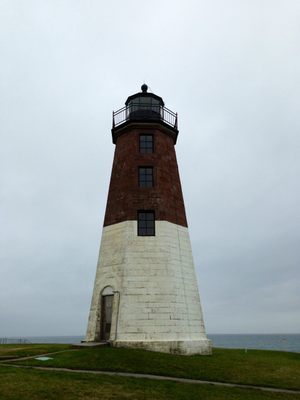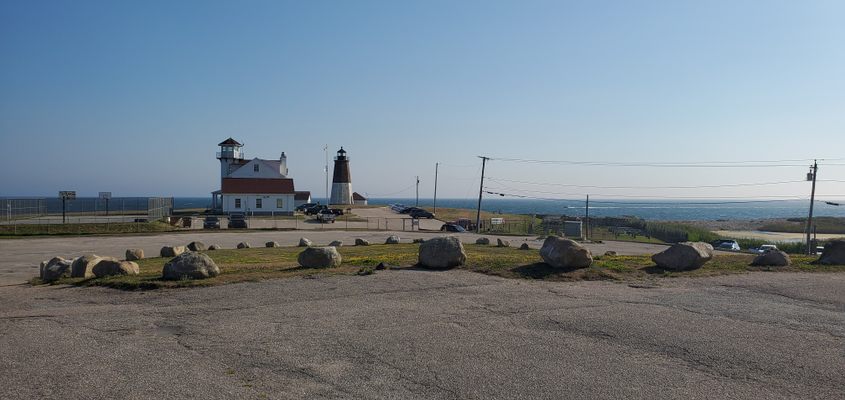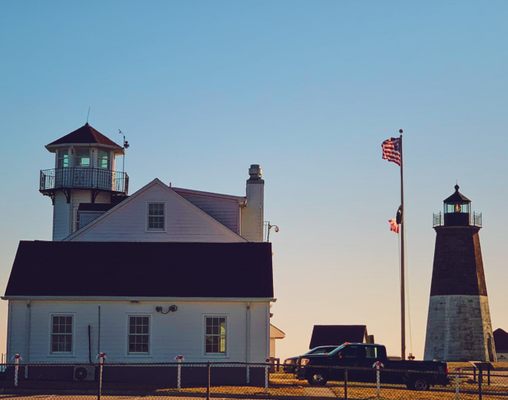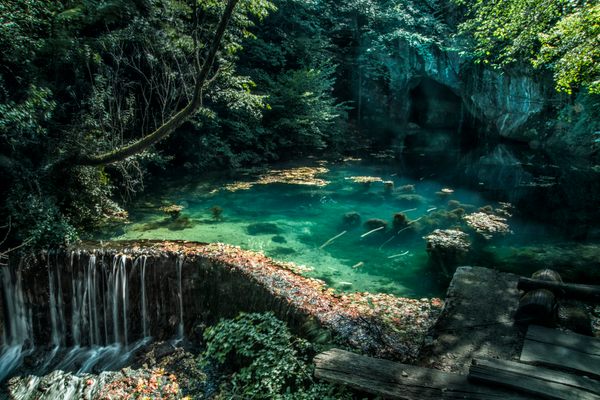About
Known as a "Graveyard of the Atlantic," Point Judith, in Narragansett, RI, has confounded seafarers since the first European ships explored the continent.
High shipping traffic, coupled with the dense fog that frequently blankets the coastline and miles of dangerous shoals, have led to a remarkably high number of shipwrecks. In 1855 alone, sixteen ships either ran aground or were wrecked within sight of the Point Judith lighthouse.
The lighthouse itself is a beautiful, tall and rugged landmark on the rocky New England coastline. The original building, which used whale oil to light its revolving spider lantern, was completed in 1810 and subsequently destroyed by a hurricane five years later. The lighthouse was rebuilt in 1816, and then replaced in 1857 by the building that remains today. The coast guard administrative buildings were added in 1937, and the lighthouse became automated in 1957.
But perhaps the most interesting thing about the Point Judith Lighthouse is what happened on May 5, 1945 a few miles offshore. On May 4, 1945, Adolf Hitler's successor, Admiral Donitz, ordered all German forces to surrender, effectively ending World War II. As part of the surrender process, all U-boats were radioed a "cease and desist" message. A few submarines, however, remained submerged at the time of surrender and did not receive the communications. U-853 was one of those submarines. On the morning of May 5th, the S.S. Black Point, a World War I era coal transport ship, passed Point Judith on the way to Boston with a shipment of coal. As the Coast Guard lookout prepared to log the ship sighting in his notebook, he saw the old ship stop and then heard an explosion. The S.S. Black Point quickly sank, taking twelve of the forty-six-person crew with her in what became the final wartime act in the Atlantic theater of World War II. U-853 was discovered and sunk later that day, marking the official end of hostilities.
While nobody seems to know when it began or who started it, the Point Judith Lighthouse is also home to peculiar examples of the phenomenon known as "rock balancing," an activity comprised of stacking rocks into small pillars for artistic or meditative purposes. While these precarious cairns often succumb to even the slightest breeze, they strike a naturalistic contrast to the imposing stone structure that has stood watch over this treacherous stretch of the Atlantic for nearly two centuries.
Related Tags
Community Contributors
Added By
Published
September 4, 2013










































